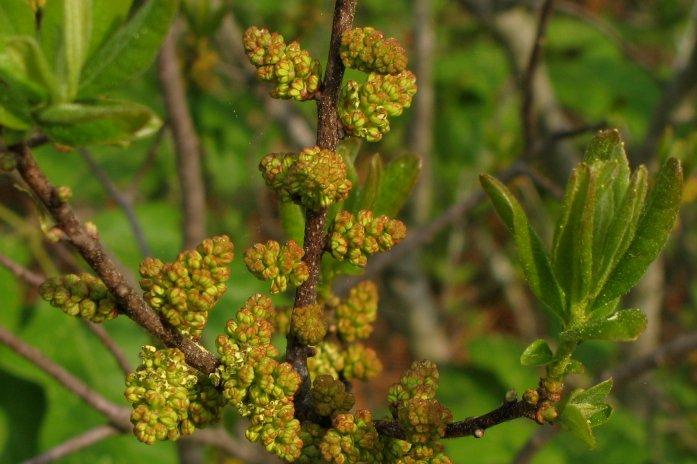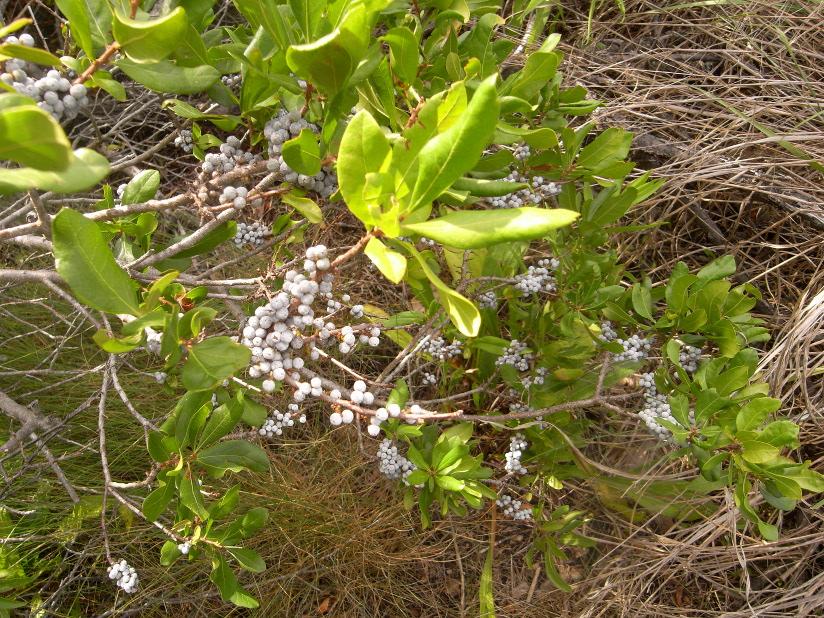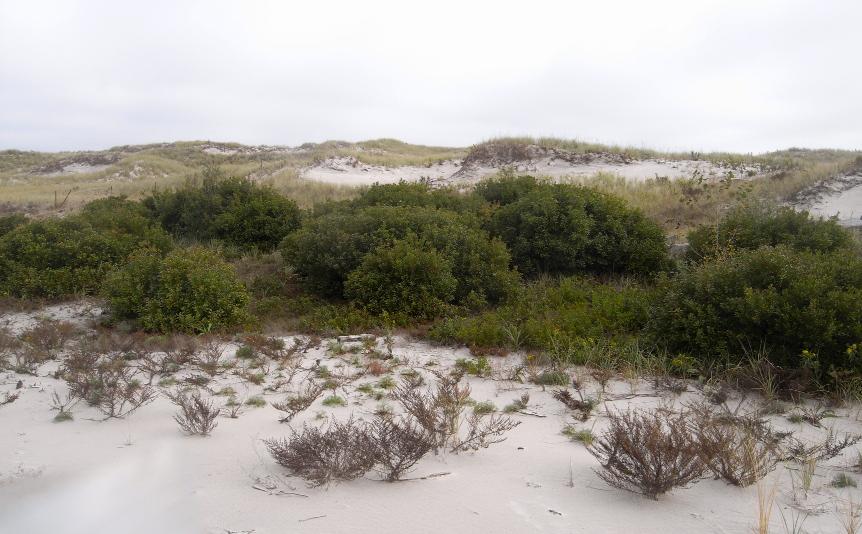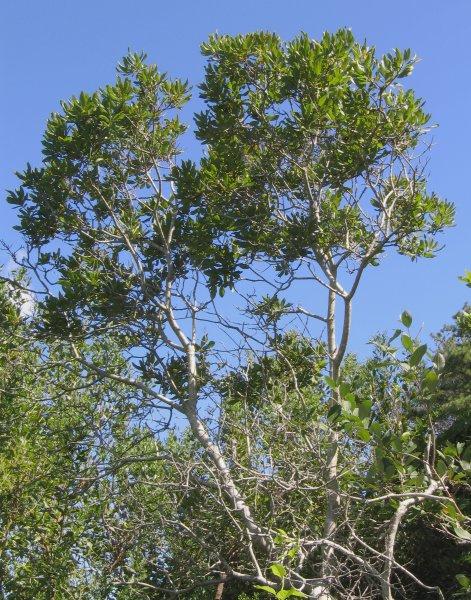Northern Bayberry
Morella pensylvanica (syn. Myrica pensylvanica)
Northern bayberry has had many other common names, including waxberry, swamp candleberry, and candletree.
As always, these names emphasize important facts. This costal shrub (sometimes a small tree) of northeastern North America
produces wax-covered fruits that have been used for candle-making. It is actually southern bayberry
(Myrica cerifera) that has been traditionally used more often, yet it is also possible to make candles
with northern bayberry.
Bayberry flowers are unisexual, staminate and pistillate growing on separate plants.
Fruits are produced only when both sexes grow close together. Bayberries can be found in various habitats
ranging from coastal dunes, pine barrens, and pine-oak forests to wetland margins and stream banks.
Bayberry belongs to myrtle family, whose members are known for their aromatic qualities.
Young branchlets and leaf undersides are dotted with aromatic glands.
Crush a leaf and enjoy the "smell of the family"!
Another aromatic plant from this family growing along the trail is {{{sweetfern (Comptonia peregrina)}}}.

Staminate flowers, May 23

Wax-covered fruits, August 16

Bayberry in the dunes, Plymouth Long Beach

Bayberry shaped as a small tree, Wing Island, Brewster